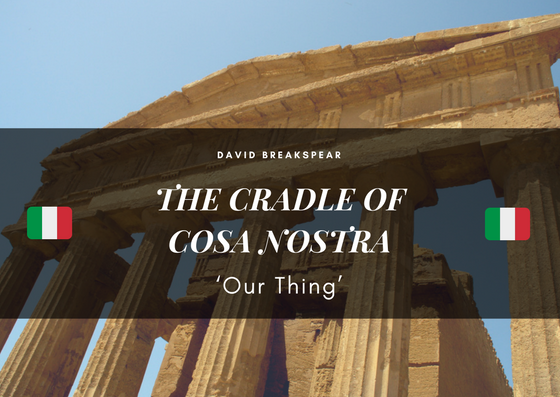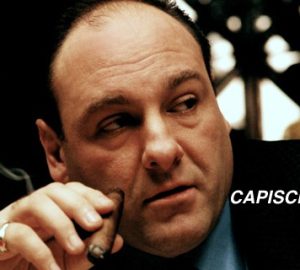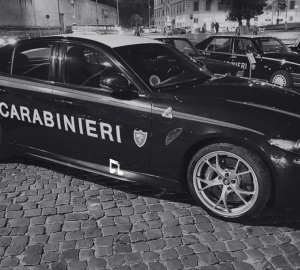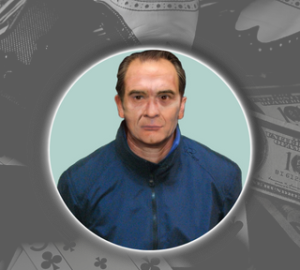While there was a time when people were reluctant to pronounce the word “Mafia” … nowadays people have gone so far in the opposite direction that it has become an overused term … I am no longer willing to accept the habit of speaking of the Mafia in descriptive and all-inclusive terms that make it possible to stack up phenomena that
are indeed related to the field of organised crime but that have little or nothing in common with the Mafia.
Giovanni Falcone, 1990
The Italian town of Corleone, Sicily is the town that inspired the fictional crime clan’s name in “The Godfather” trilogy. It is also one of many strongholds in Sicily that the Cosa Nostra once held. Sicily a place with beaches of beautiful black-sand, a volcano to ski on, and in the capital Palermo, thousands of mummified citizens in the catacombs. And……………. the Mafia? Let us delve a little deeper into the darker side of Sicily, the birthplace of the Cosa Nostra and the roots of the American Mafia.
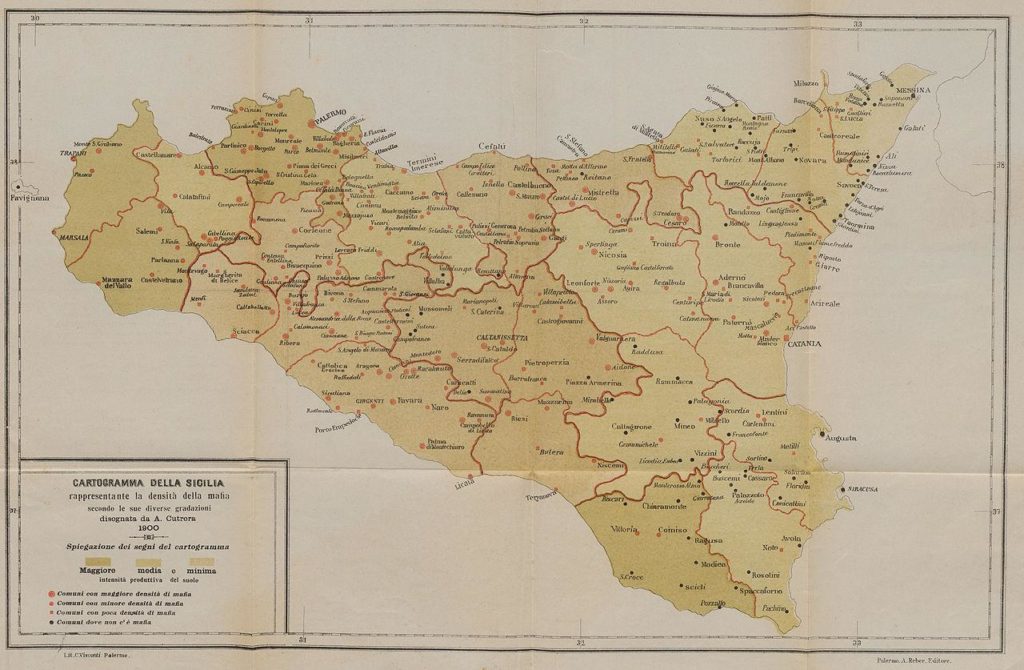
This map shows the Mafia presence in Sicily circa 1900. The red dots signify the towns with Mafia activity.
The origin of Cosa Nostra is tough to demonstrate because Mafiosi are very secretive and do not keep historical records of their own. In fact, they have been known to spread deliberate lies about their past. In 1864 the leader of the Palermo National Guard, Niccollò Turrisi Colonna, wrote about a “sect of thieves” operating throughout Sicily, they had special signals to recognise each other, they offered protection services and hated the law. They also had a code of loyalty and no inclination of interacting with the police, this was known as ‘Umirtà’ (code of silence). In 1865, the first official description of this sect as ‘Mafia’, was termed in communication between the prefect of Palermo and Rome. The earliest known mention of the famous initiation ritual was contained within an 1876 police report. One of the first accounts of an initiation ceremony into the Mafia was given by Bernardino Verro. Verro became a member of a Mafia group in Corleone, the Fratuzzi (Little Brothers). In a memoir written many years later, he described the initiation ritual which he underwent in the spring of 1893:
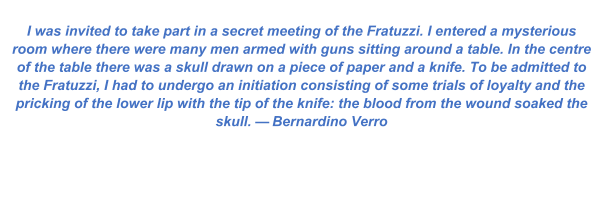
Between 1898 and 1900, Ermanno Sangiorgi, the police chief of Palermo, in a series of reports, identified 670 Mafiosi belonging to eight Mafia clans that went through alternating stages of collaboration and war. The report mentioned initiation rituals and codes of conduct, as well as criminal activities that included counterfeiting, kidnappings for ransom, murder, robbery, and witness intimidation. The Mafia also maintained funds to support the families of imprisoned members and pay defence lawyers. To annihilate the Mafia, Italian troops arrested 64 people of Palermo in February 1898.
Benito Mussolini begun a campaign in 1925 to destroy the Mafia and avow Fascist control over Sicilian life. The Mafia threatened and undermined his power in Sicily, and a successful campaign would strengthen him as the new leader, legitimizing and empowering his rule. This would be a great propaganda coup for Fascism, and it would also provide an excuse to suppress his political opponents on the island. In May 1924, as prime minister, Mussolini visited Sicily where he was received by mayor/Mafia boss Francesco Cuccia. At some point, Cuccia expressed surprise at Mussolini’s police escort and whispered in his ear: “You are with me, you are under my protection. What do you need all these cops for?” Mussolini rejected Cuccia’s offer of protection, and the sindaco felt that he had been slighted and instructed the townsfolk not to attend the duce’s speech. Mussolini felt humiliated and outraged. Cuccia’s careless remark has passed into history as the catalyst for Mussolini’s war on the Mafia. Mussolini firmly established his power in January 1925. In October 1925 Mussolini appointed Cesare Mori as the Prefect of Palermo and granted him special powers to fight the Mafia. Mori formed a small army of policemen, carabinieri and militiamen. To force suspects to surrender, they would take their families hostage, sell off their property, or publicly slaughter their livestock. By 1928, more than 11,000 suspects were arrested. Confessions were sometimes extracted through beatings and torture. Charges of Mafia association were typically levelled at poor peasants and gabellotti (farm leaseholders) but were avoided when dealing with major landowners. Many were tried en masse. More than 1,200 were convicted and imprisoned, and many others were internally exiled without trial. Mori’s campaign ended in June 1929 when Mussolini recalled him to Rome. He did not permanently crush the Mafia as the Fascist press proclaimed, but his campaign was nonetheless very successful at suppressing it. As Mafia informant Antonino Calderone reminisced:
“The music changed. Mafiosi had a hard life. […] After the war the mafia hardly existed anymore. The Sicilian Families had all been broken up.”
Sicily’s murder rate sharply declined. Landowners were able to raise the legal rents on their lands, sometimes as much as ten-thousand-fold. Many Mafiosi fled to the United States, and to a lesser extent, Canada. Among these were Carlo Gambino and Joseph Bonanno, who became powerful Mafia bosses in New York City in the United States, as well as Nicolo Rizzuto and Vito Rizzuto in Montreal in Canada.
As this is my debut piece, I would just like to chuck a few thank yous out there. Thank you firstly to NCS for allowing me this opportunity for writing for their prestigious title. A big shout out to my colleague and good friend Rob Bailot Jr. I also moderate on Rob’s Facebook group Omerta Social Club, which brings me on to Lesley Hughes with whom I co admin Global Mafia Social Club on Facebook, thank you so much for the support Lesley. Debs, Laura, Grace, Donna and Sara & Rob from Rejuvenate Project, you guys have also allowed me to get this far. Roxanne for given me two wonderful sons. The special lady in my life, love ya baby girl. Last but definitely not least I want to say a massive thank you to my children and grandchildren. Kirsty, Taylor, Reece and my two granddaughters Ella and Megan, Love you to the moon and back guys.
- Ciro Dapagio’s MobKing: Trailer & Review - July 24, 2023
- LUCKY: A True Crime Graphic Novel - April 25, 2023
- The Theft of The Marlborough Diamond – Chapter 2 - February 14, 2023






